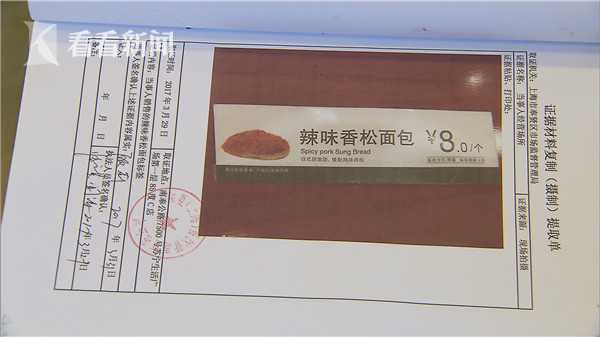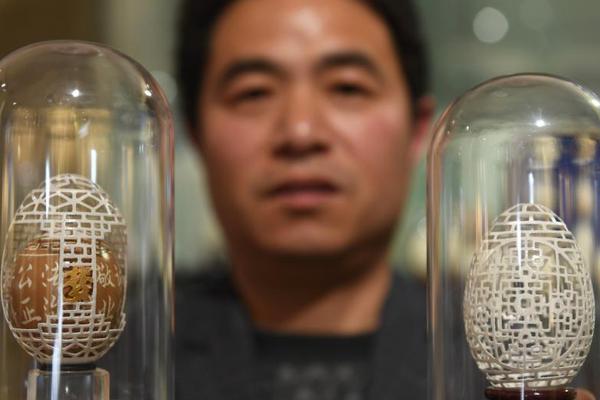
1. First, enable and install the virtual machine in the BIOS settings, and then install the virtual machine under the system.
2. Choose virtual machine software: First, you need to choose the virtual machine software that suits your needs. At present, the common virtual machine software on the market includes VMware Workstation, Oracle VirtualBox, Microsoft Hyper-V, etc.
3. Press the DEL key to enter the BIOS page when booting.Keep pressing the DEL key when turning on the power. After entering, use the right arrow key of the keyboard to move to the Advanced option. Then select the first CPU configuration and press Enter to enter. After proceeding, select the third Blue Secure Virtual Machine Mode.
4. Step 1: Choose a suitable virtual machine software. First of all, you need to choose a virtual machine software that suits your needs. Common virtual machine software include VMware Workstation, VirtualBox, Hyper-V, etc. Choose a suitable software for installation according to your needs.

1. Method 1: First, turn on the computer, enter the desktop, right-click on the start icon in the lower left corner, and select the run option in the open menu. Method 2: Press the "WIN+R" key combination on the keyboard to call up the running window.
2. How to turn on the built-in virtual machine in win10? The first step is to click the Windows key in the lower left corner of the desktop, and thenClick "Windows System" in all applications, then find and open "Control Panel". In the second step, click "Programs" in the control panel.
3. Win10's built-in virtual machine is: find the control panel, click the Windows key, and then select "Windows System" in all applications. After opening, find "Control Panel". After opening the control panel, select the program. Then in the program, find "Start or Turn Off Windows Function".
4. First of all, find the control panel. We click the windows key, and then choose to find "Windows System" in all applications. After opening, we find the "Control Panel" and open it. After opening the control panel, we select the program, as shown in the figure.Then in the program, find "Start or Turn Off Windows Function".
5. Today, I will introduce the specific operation steps of how to open the built-in virtual machine of the Win10 system.
6. First, we open the "Control Panel" and then select "Enable or Off Windows Function" in the "Programs and Functions" submenu, as shown in the figure below: Check "Hyper" in the "Start or Turn Off Windows Functions" submenu and check it on, and then "OK" to restart the computer. Remember, be sure to restart the computer.
1. Method 1: Turn on the power firstBrain, enter the desktop, right-click on the start icon in the lower left corner, and select the run option in the open menu. Method 2: Press the "WIN+R" key combination on the keyboard to call up the running window.
2. First of all, if we open the Hyper-V program, we can find Hyper-V in the Windows management tools under all applications, and we click to open. After opening, we click New. 2 After clicking New, a selection will pop up. We select "Virtual Machine".
3. Set the network of the virtual machine in "Configure Network", and generally select [Default Switch]. Click [Next]. Create a virtual hard disk for the virtual machine in "Connect Virtual Hard Disk" and select the storage location and hard disk size. Click [Next].
4. The built-in virtual machine of WIN 10 needs to be enabled by yourself: right-click Start - Applications and Functions - Programs and Functions - Enable or Turn Off Windows Functions - Check "Hyper-v" - OK. Just do it. Note: WIN 10 Home Edition does not have this function.
5. Open "Control Panel" in the computer and click "Programs". 2 Find "Programs and Functions" and click "Enable or Disable Windows Functions" below. 3 In the pop-up window, find the virtual machine "Hyper-V" that comes with Windows, check it and click "OK". 4 Then click "Restart Execution Now".
6. First, put the cursor on "Start"On the menu, right-click, select the "Control Panel (P)" option in the pop-up list, and open the control panel.
OKX Wallet download-APP, download it now, new users will receive a novice gift pack.
1. First, enable and install the virtual machine in the BIOS settings, and then install the virtual machine under the system.
2. Choose virtual machine software: First, you need to choose the virtual machine software that suits your needs. At present, the common virtual machine software on the market includes VMware Workstation, Oracle VirtualBox, Microsoft Hyper-V, etc.
3. Press the DEL key to enter the BIOS page when booting.Keep pressing the DEL key when turning on the power. After entering, use the right arrow key of the keyboard to move to the Advanced option. Then select the first CPU configuration and press Enter to enter. After proceeding, select the third Blue Secure Virtual Machine Mode.
4. Step 1: Choose a suitable virtual machine software. First of all, you need to choose a virtual machine software that suits your needs. Common virtual machine software include VMware Workstation, VirtualBox, Hyper-V, etc. Choose a suitable software for installation according to your needs.

1. Method 1: First, turn on the computer, enter the desktop, right-click on the start icon in the lower left corner, and select the run option in the open menu. Method 2: Press the "WIN+R" key combination on the keyboard to call up the running window.
2. How to turn on the built-in virtual machine in win10? The first step is to click the Windows key in the lower left corner of the desktop, and thenClick "Windows System" in all applications, then find and open "Control Panel". In the second step, click "Programs" in the control panel.
3. Win10's built-in virtual machine is: find the control panel, click the Windows key, and then select "Windows System" in all applications. After opening, find "Control Panel". After opening the control panel, select the program. Then in the program, find "Start or Turn Off Windows Function".
4. First of all, find the control panel. We click the windows key, and then choose to find "Windows System" in all applications. After opening, we find the "Control Panel" and open it. After opening the control panel, we select the program, as shown in the figure.Then in the program, find "Start or Turn Off Windows Function".
5. Today, I will introduce the specific operation steps of how to open the built-in virtual machine of the Win10 system.
6. First, we open the "Control Panel" and then select "Enable or Off Windows Function" in the "Programs and Functions" submenu, as shown in the figure below: Check "Hyper" in the "Start or Turn Off Windows Functions" submenu and check it on, and then "OK" to restart the computer. Remember, be sure to restart the computer.
1. Method 1: Turn on the power firstBrain, enter the desktop, right-click on the start icon in the lower left corner, and select the run option in the open menu. Method 2: Press the "WIN+R" key combination on the keyboard to call up the running window.
2. First of all, if we open the Hyper-V program, we can find Hyper-V in the Windows management tools under all applications, and we click to open. After opening, we click New. 2 After clicking New, a selection will pop up. We select "Virtual Machine".
3. Set the network of the virtual machine in "Configure Network", and generally select [Default Switch]. Click [Next]. Create a virtual hard disk for the virtual machine in "Connect Virtual Hard Disk" and select the storage location and hard disk size. Click [Next].
4. The built-in virtual machine of WIN 10 needs to be enabled by yourself: right-click Start - Applications and Functions - Programs and Functions - Enable or Turn Off Windows Functions - Check "Hyper-v" - OK. Just do it. Note: WIN 10 Home Edition does not have this function.
5. Open "Control Panel" in the computer and click "Programs". 2 Find "Programs and Functions" and click "Enable or Disable Windows Functions" below. 3 In the pop-up window, find the virtual machine "Hyper-V" that comes with Windows, check it and click "OK". 4 Then click "Restart Execution Now".
6. First, put the cursor on "Start"On the menu, right-click, select the "Control Panel (P)" option in the pop-up list, and open the control panel.
 Binance download
Binance download
749.68MB
Check Binance Download for PC Windows 10
Binance Download for PC Windows 10
278.51MB
Check OKX Wallet apk download latest version
OKX Wallet apk download latest version
412.28MB
Check Binance US
Binance US
286.67MB
Check Binance app
Binance app
623.15MB
Check Binance exchange
Binance exchange
452.92MB
Check Binance app
Binance app
175.54MB
Check Binance app
Binance app
912.68MB
Check Binance app
Binance app
361.98MB
Check OKX Wallet login
OKX Wallet login
671.55MB
Check Binance download
Binance download
871.64MB
Check Binance login
Binance login
947.37MB
Check Binance download
Binance download
367.93MB
Check Binance login App
Binance login App
746.85MB
Check OKX Wallet
OKX Wallet
915.28MB
Check OKX review
OKX review
874.99MB
Check Binance Download for PC Windows 10
Binance Download for PC Windows 10
149.61MB
Check Binance download APK
Binance download APK
179.82MB
Check Binance market
Binance market
814.48MB
Check OKX Wallet APK
OKX Wallet APK
469.82MB
Check Binance login
Binance login
563.59MB
Check Binance Download for PC
Binance Download for PC
335.78MB
Check Binance Download for PC
Binance Download for PC
461.17MB
Check Binance US
Binance US
813.32MB
Check Binance APK
Binance APK
766.57MB
Check Binance APK
Binance APK
138.76MB
Check Binance download iOS
Binance download iOS
161.39MB
Check Binance app
Binance app
733.55MB
Check Binance login
Binance login
754.36MB
Check OKX Wallet app
OKX Wallet app
153.69MB
Check OKX Wallet
OKX Wallet
929.39MB
Check OKX Wallet download
OKX Wallet download
767.43MB
Check OKX Wallet login
OKX Wallet login
679.53MB
Check Binance APK
Binance APK
768.61MB
Check Binance download APK
Binance download APK
626.68MB
Check OKX Wallet login
OKX Wallet login
918.56MB
Check
Scan to install
OKX Wallet download to discover more
Netizen comments More
648 翻肠搅肚网
2025-02-28 09:06 recommend
315 独鹤鸡群网
2025-02-28 08:42 recommend
2787 晓风残月网
2025-02-28 08:14 recommend
1692 果然如此网
2025-02-28 08:12 recommend
167 有枝有叶网
2025-02-28 07:26 recommend